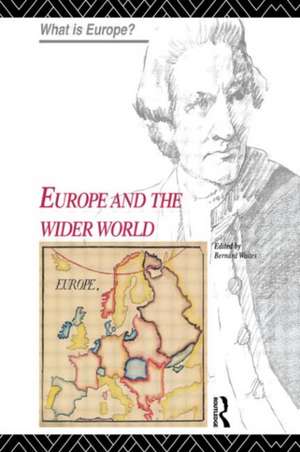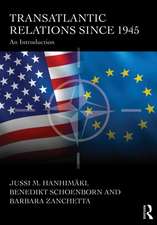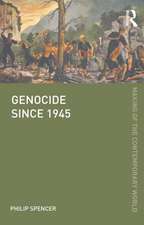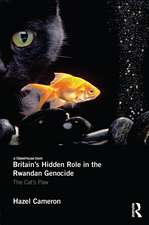Europe and the Wider World: What is Europe?
Editat de Bernard Waitesen Limba Engleză Paperback – 30 mar 1995
A unifying feature of the analysis included here is provided by the fact that the "bi-polar world" that emerged in the aftermath of the Second World War has effectively been brought to an end with the collapse first of Soviet control in Eastern Europe, and then by the break-up of the Soviet Union itself and a prospective reduction of American influence in western Europe. What will Europe look like in an increasingly "multi-polar world"? An answer to this depends not only on the evolving external connections between Europe and other parts of the world but also on the internal development of European political and economic integration. The dynamic of this crucial dual relationship is examined here.
| Toate formatele și edițiile | Preț | Express |
|---|---|---|
| Paperback (1) | 451.32 lei 6-8 săpt. | |
| Taylor & Francis – 30 mar 1995 | 451.32 lei 6-8 săpt. | |
| Hardback (1) | 1062.16 lei 6-8 săpt. | |
| Taylor & Francis – 30 mar 1995 | 1062.16 lei 6-8 săpt. |
Preț: 451.32 lei
Nou
Puncte Express: 677
Preț estimativ în valută:
86.37€ • 89.84$ • 71.30£
86.37€ • 89.84$ • 71.30£
Carte tipărită la comandă
Livrare economică 12-26 aprilie
Preluare comenzi: 021 569.72.76
Specificații
ISBN-13: 9780415124218
ISBN-10: 0415124212
Pagini: 216
Dimensiuni: 189 x 246 x 12 mm
Greutate: 0.5 kg
Ediția:Rev
Editura: Taylor & Francis
Colecția Routledge
Seria What is Europe?
Locul publicării:Oxford, United Kingdom
ISBN-10: 0415124212
Pagini: 216
Dimensiuni: 189 x 246 x 12 mm
Greutate: 0.5 kg
Ediția:Rev
Editura: Taylor & Francis
Colecția Routledge
Seria What is Europe?
Locul publicării:Oxford, United Kingdom
Cuprins
1: Europe and the Third World 2: Europe and Russia 3: Europe and the United States 4: Europe in the global economy
Descriere
Examines the concept of Europe in relation to the USA, the developing world and the former Soviet Union, drawing on the perspectives of international history, politics and economics.




























